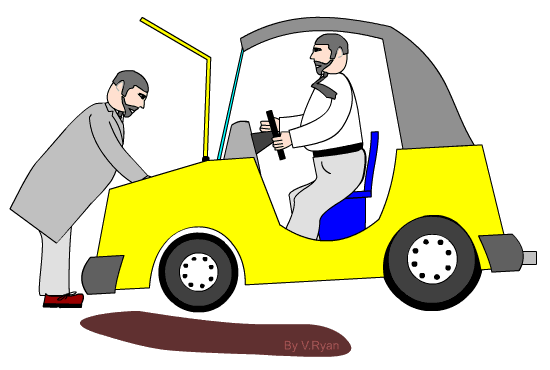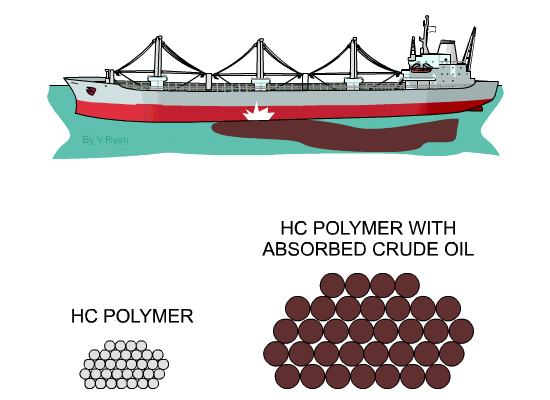| CLICK HERE FOR INDEX PAGE |
| HYDROCARBON ENCAPSULATING POLYMERS |
| V. Ryan © 2010 |
| PDF FILE - CLICK HERE FOR PRINTABLE WORKSHEET |
|
These are polymers that absorb oil, forming a rubbery substance. This has a potential application for the prevention of oil slicks, at sea. They are environmentally ‘friendly’ products, developed to manage hydrocarbon-based liquid spills. |
| SMALL SCALE USE: Hydrocarbon Encapsulating Polymers (HC Polymers) can absorb light hydrocarbon spills. This means light oil products such as diesel, can be absorbed. A potential practical application is at petrol / diesel fuel stations. If a spill at the pump takes place, a HC Polymer could be applied, simply absorbing the split fuel, safely. The resulting solidified hydrocarbon is easy to clean up and transport. It does not leach the fuel as the fuel has been completely absorb by the polymer. It can then be land filled safely. Furthermore, it can be used as a solid fuel and even burned. |
 |
| The oil spill from the car is a danger
because it is slippy and a mechanic could easily lose his/her balance. A
serious accident is a possibility. Once the oil spill is identified, a HC polymer can be applied, absorbing the oil. The resulting rubbery substance can then be removed and disposed of in an environmentally acceptable way. |
| HC Polymers are free of toxic chemicals and consequently are safe to handle and transport. Absorbed hydrocarbons (such as oil) are rendered inert and the HC Polymer works in seconds. This means that small spills of oil, such as those at a garage or petrol station, are absorbed within minutes. |
 |
| LARGE SCALE POTENTIAL USE: One of the most environmentally damaging oil slicks occurred after the Exxon Valdez oil tanker rang aground off the coast of Alaska, 1989. It cost over three billion dollars to clean up the resulting environmental damage. It has been suggested that the application of HC Polymers to the spill could have removed the crude oil in a tenth of the time and at a much lower cost.(HC polymers did not exist in the 1980s) |
 |
| The oil tanker has run aground and crude
oil is escaping through the ruptured ship’s hull. The ship carries HC polymers, they are applied to the leaking crude oil, absorbing the flow, This gives vital time, allowing the emergency services and environmental protection agencies to arrive at the scene. The ships crude oil can then be pumped onto another tanker, whilst the remaining leaking oil can be absorbed by more HC Polymer. The resulting ‘solid fuel’ can be burnt at power stations to produce electrical energy. |
| CLICK HERE FOR RESISTANT MATERIALS INDEX PAGE |